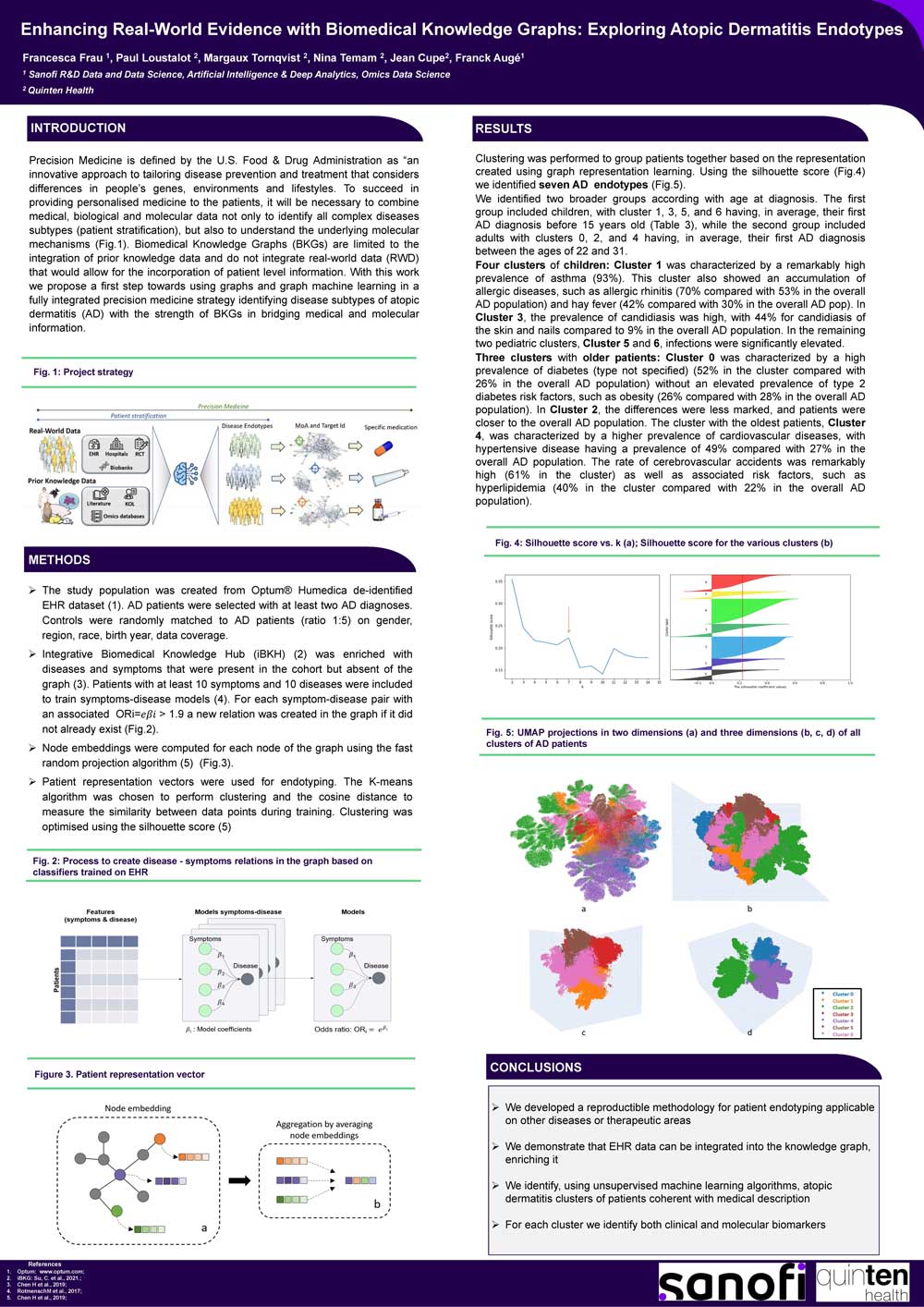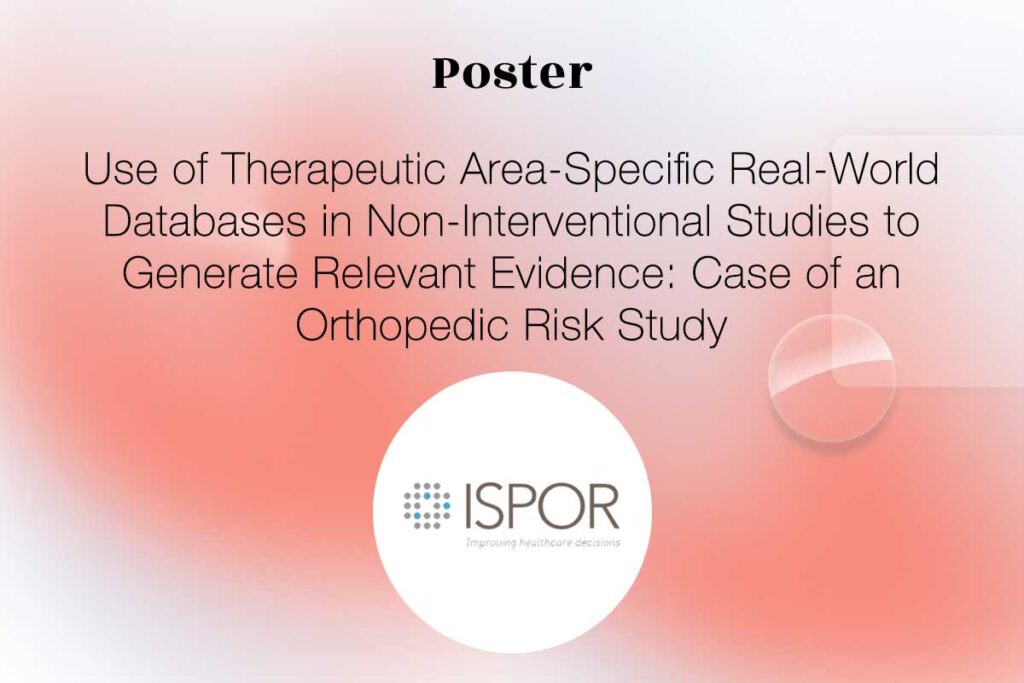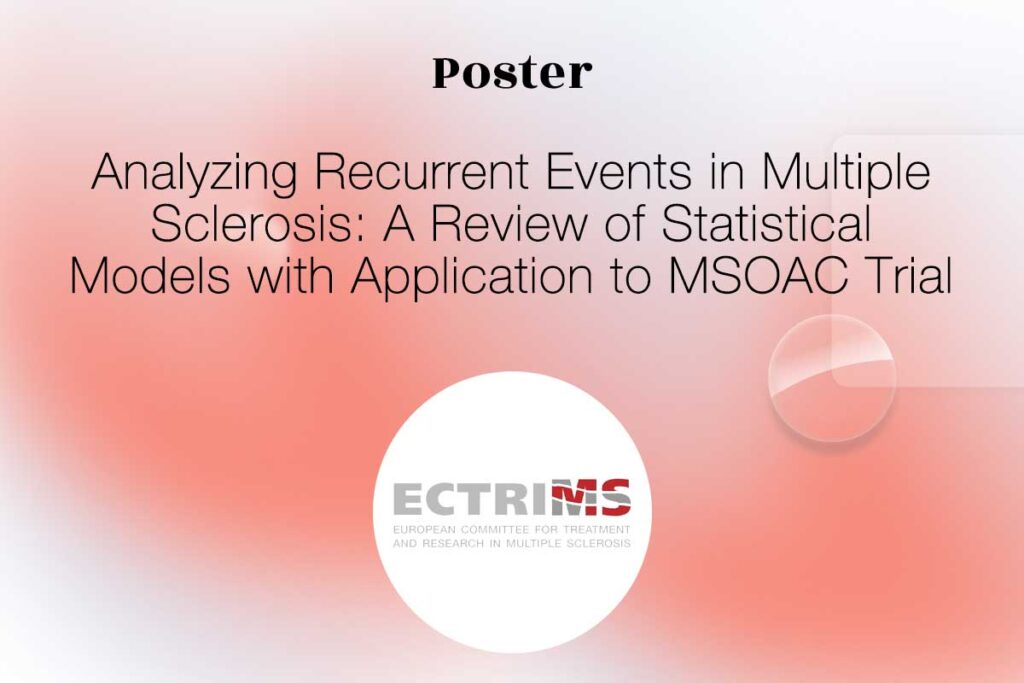Authors: F. Frau, P. Loustalot, M. Törnqvist, N. Temam, J. Cupe, F. Augé
Date: July 2023
DOI:
CONFERENCE/VALUE IN HEALTH INFO:
20aa-mm, Title, Event 20xx, City, Country
Topic, Volume xx, Issue xxx (Month Year)
Abstract
Background
Precision Medicine is defined by the U.S. Food & Drug Administration as “an innovative approach to tailoring disease prevention and treatment that considers differences in people’s genes, environments and lifestyles.
Methods
To succeed in providing personalised medicine to the patients, it will be necessary to combine medical, biological and molecular data not only to identify all complex diseases subtypes (patient stratification), but also to understand the underlying molecular mechanisms. Biomedical Knowledge Graphs (BKGs) are limited to the integration of prior knowledge data and do not integrate real-world data (RWD) that would allow for the incorporation of patient level information.
Results
With this work we propose a first step towards using graphs and graph machine learning in a fully integrated precision medicine strategy. We show that RWD can be integrated with a BKG to form a Patient & Biomedical Knowledge Graph. This allows to create new patient’s representations using graph representation leaning and which can be used to synergize the strength of RWD studies in identifying disease subtypes with the strength of BKGs in bridging medical and molecular information.
Conclusion
We applied our methodology to atopic dermatitis (AD), identifying 7 subgroups of patients, characterising the medical, biological, and molecular evidence of each subtype.









